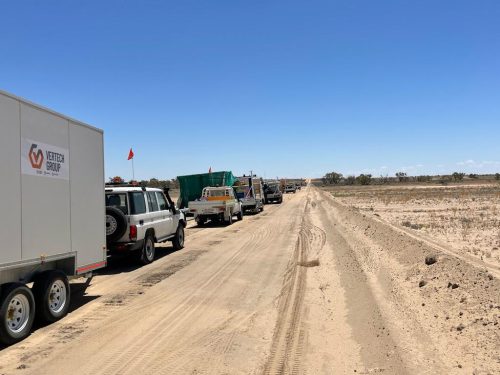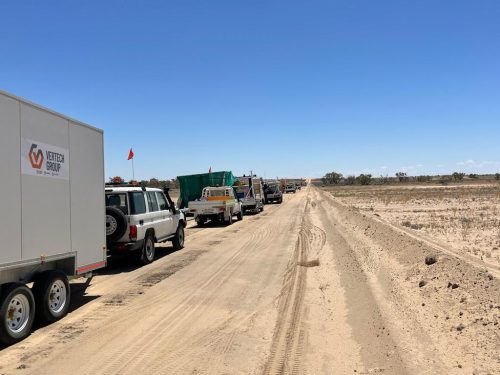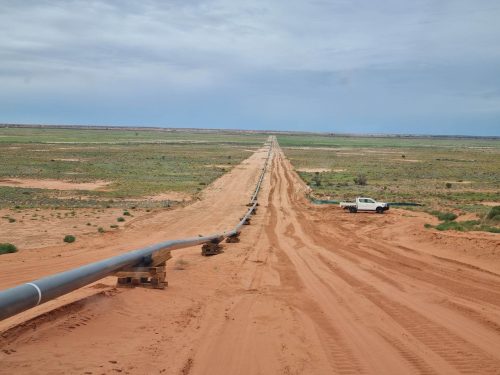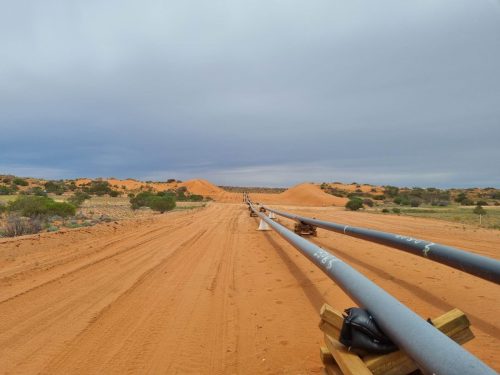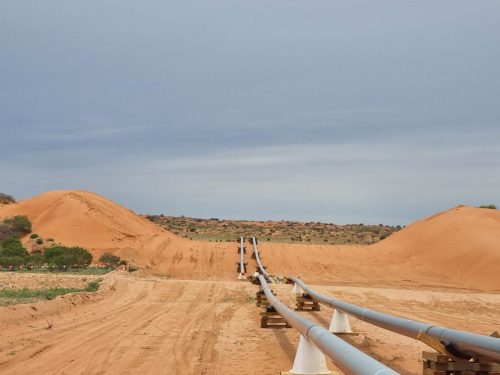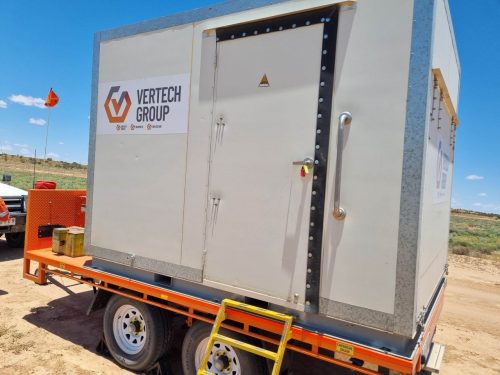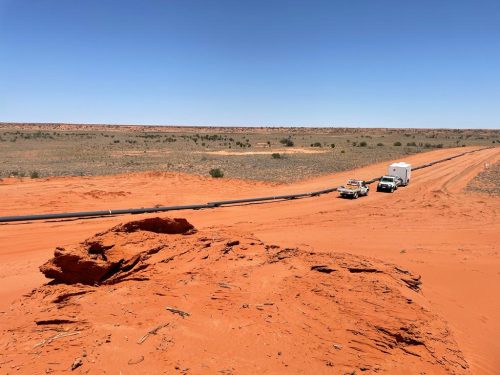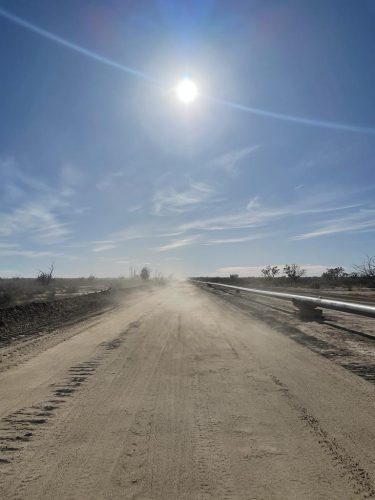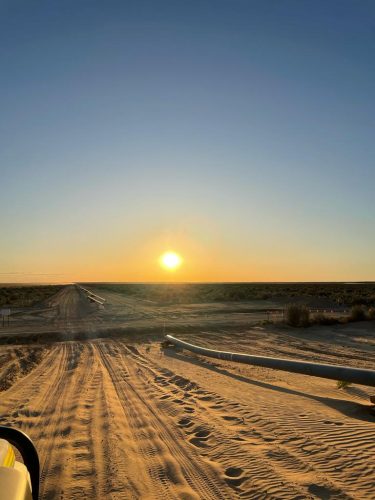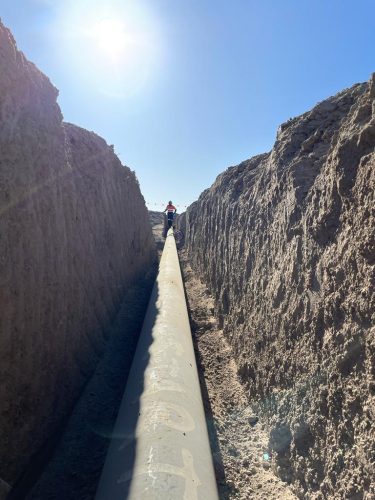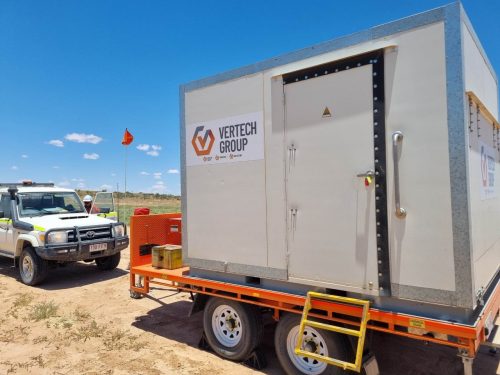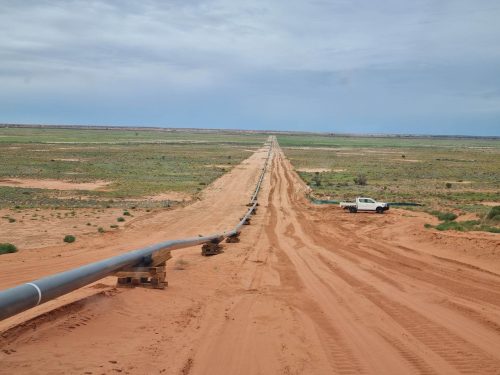The Moomba to Cross-Border CCS Pipeline runs east from the Santos-owned Moomba gas Plant to depleted reservoirs in the Marabooka and Strzelecki fields. At a diameter of DN250 (10″) and a length of approximately 50 kilometres, MPC Kinetic engaged Vertech to conduct radiographic inspections throughout the pipeline’s construction.
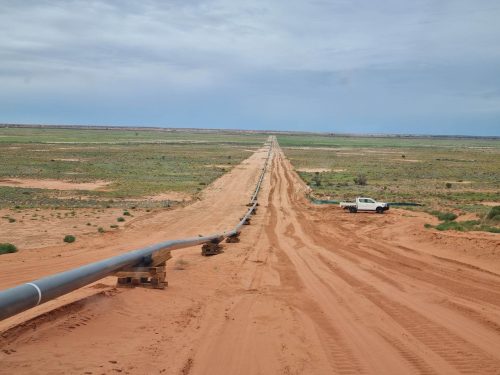
Moomba to Cross Border CCS Pipeline
Moomba is a natural gas processing hub in the South Australian portion of the Cooper Basin. It purifies natural gas before distributing it to South Australia, New South Wales, and Queensland via the East Coast domestic gas pipeline network. One processing step at Moomba is removing the CO2 from the natural gas, which is then vented. The objective of the Moomba CCS project was to capture this vented CO2 and store it underground within depleted gas reservoirs, avoiding its release into the atmosphere.
Project Overview
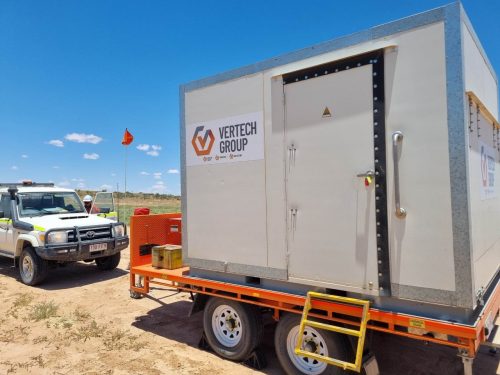
Moomba is a natural gas processing hub in the South Australia’s Cooper Basin. The facility refines the extracted natural gas before distributing it to various destinations in South Australia, New South Wales, and Queensland via the East Coast domestic gas pipeline network. Among the processes conducted at Moomba is the extraction of carbon dioxide (CO2) from the natural gas, which is vented into the atmosphere. The Moomba Carbon Capture and Storage (CCS) initiative aims to, instead of venting CO2, securely store it underground within depleted gas reservoirs.
- Capture: A stainless steel header connects the four existing CO2 removal units, collecting the CO2 and delivering it to the CCS compressor at near atmospheric pressure.
- Compression: A four-stage centrifugal compressor compresses the CO2 to a pressure of ~13 MPa. Compression of the CO2 is required to push it through the pipeline and into the depleted gas reservoirs. The first three compression stages also reduce the concentration of water in the CO2, reducing the load on the Tri-Ethylene Glycol (TEG) dehydrator.
- Dehydration: A TEG dehydration package removes moisture from the CO2 before entering the pipeline. This is to ensure no free water formation within the carbon steel CO2 pipeline, preventing corrosion and the formation of CO2 hydrates.
- Transport: A 50 km carbon steel pipeline transports the compressed, dehydrated CO2 from Moomba to the injection reservoir.
- Injection: Four injection well skids are used to monitor and control the rates of CO2 injection at each well while
Pipeline and design considerations
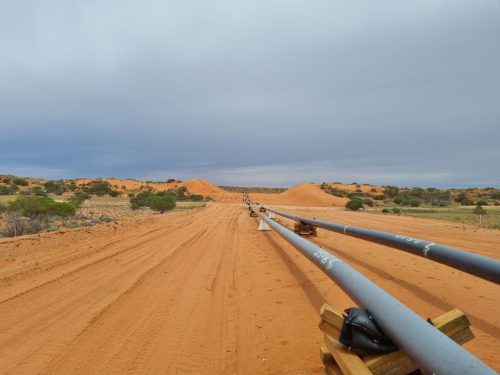
The Moomba to Cross-Border CCS Pipeline runs approximately 50 km east from the Moomba Plant CCS Facility to depleted reservoirs in the Marabooka and Strzelecki fields, which have been selected for the first injection phase.
A robust design strategy was implemented following AS 2885, with the project piping specification aiming to mitigate the risk associated with pipeline fracture propagation. To ensure the best available methods were employed, the traditional Two Curve Method calculations and the recently published DNV recommended practice five were used to select the required toughness.
The standard wall pipe selection was governed by fracture control requirements considering penetration resistance, fracture control, NACE requirements, minimum temperatures, cost, and material availability.
Scope
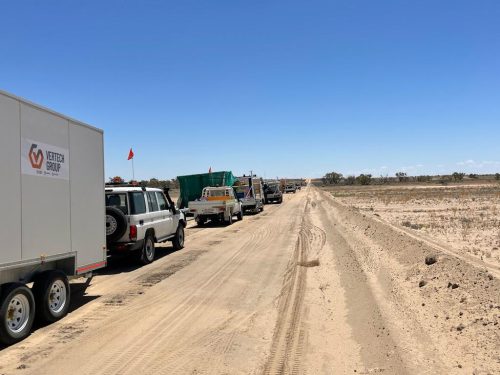
MPC Kinetic contracted Vertech Group’s Roma operations to perform Radiography and Non-Destructive Testing (NDT) on the 50km DN250 (10″) Moomba to Cross Border CCS Pipeline. Digital radiography and internal JME crawlers were used for the mainline section, resulting in substantial time and cost savings compared to traditional radiography. This approach also ensured quick result turnaround, enabling MPC’s construction team’s seamless progression to the next project phase.
The assessment of tie-in welds involved conventional radiography using Rigaku 300kV X-ray tubes, supported by mobile darkroom facilities on custom-made, rugged four-wheel-drive trucks designed explicitly for Cooper Basin’s harsh and sometimes challenging conditions. The need for reliability and timely test results drove the deployment of high-powered X-ray equipment and mobile darkrooms.
The Vertech team, comprising a supervisor, specialised crawler technician, nondestructive testing technicians, and trades assistants, was multi-disciplined. This versatile team was equipped to conduct onsite ultrasonic and hardness testing as needed, reducing the requirement to mobilise additional staff and ultimately lowering the overall execution costs.

